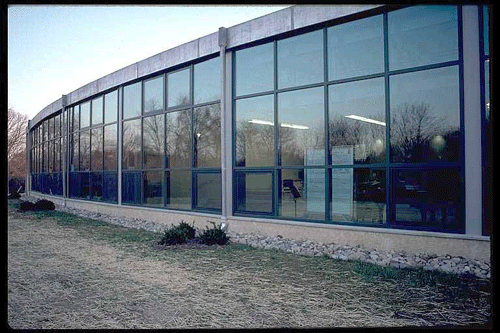Aluminum Care
Painted and anodized aluminum are very resistant to corrosion, discoloration and fading, however, neglect, dirt, chemicals and abuse can damage its finish. Door thresholds and window sills at ground level are especially susceptible to continuous exposure to water moisture and salt or other chemicals used in winter months to melt snow and ice.
The main source of damage to newly installed aluminum is splashing and run-down from overhead and adjacent masonry or related work. Mortar, cement, concrete, stucco, plaster, fireproofing, sprays, paints, and alkaline or acidic based materials are very harmful to aluminum finishes. Cleaners strong enough to clean brick work will definitely damage aluminum. Welding fluxes and tar roofing can also damage aluminum. Visible damage may occur in less than 24 hours, but may not become apparent for up to a week. If any of these materials come in contact with the aluminum, they should be rinsed away immediately with warm water and mild soap to hopefully avoid permanent irreparable damage and staining of the aluminum.
Periodic maintenance will extend the life of your aluminum. General cleaning ideally should be done on a cool day in the shade. This will help prevent cleaning solutions from drying on the aluminum before they can be washed clean. If cleaners are allowed to dry on the aluminum, the chemicals in the cleaning solution may damage the aluminum causing streaking and/or staining.
To remove light surface dirt flush the aluminum with water using moderate pressure to dislodge the dirt. If dirt still remains, use a mild detergent with a sponge or soft bristled brush. Make sure that any cloths, sponges or other cleaning equipment are free of any dirt or grit that could scratch the aluminum. Make sure to rinse away all cleaning solutions immediately from the aluminum and all adjoining materials including glass and adhesives. Then dry the area. Excessive and abrasive rubbing can cause wear damage and may dull the aluminum's finish. Abrasive, alkaline or acidic cleaners, solvents, paint removers, steel wool, or hard brushes will damage aluminum.
If the general cleaning above does not remove stains, more aggressive methods may be required. Always test a small secluded area first. These methods may damage your aluminum.
For anodized aluminum, soak the affected area with water, then scrub the area using moderate pressure with an abrasive pad and a mild detergent. Rinse with water over all surfaces, and then dry. This method is for anodized aluminum finishes only, and should never be used on painted aluminum.
For painted aluminum, Clorox or bleach may assist in removing certain stains. For Duranar painted finishes a 10 percent muriatic acid diluted with 10 parts water, may assist in removing in stains. You must immediately rinse away the solution with water, and then dry all surfaces. These methods are for painted aluminum finishes only, and should never be used on anodized aluminum.


